Computer Science Engineering
Computer Science Engineering is a discipline that integrates computer science principles, core computer science concepts and electrical engineering to develop and improve computer systems. This field prepares students for careers in the IT industry by equipping them with the necessary skills and knowledge.
This field covers a wide range of topics, including:
Programming and Software Development:
Learning various programming languages, software development methodologies, and tools to create software applications.
Algorithms and Data Structures
Understanding and designing efficient algorithms and data structures to solve computational problems.
Computer Architecture
Studying the design and organization of computer hardware, including processors, memory, and input/output devices.
Operating Systems
Learning about the software that manages computer hardware and provides services for computer programs.
Networks and Security
Understanding the principles of computer networks, including data transmission, protocols, and cybersecurity.
Database Systems
Learning about the design, implementation, and management of databases.
Artificial Intelligence and Machine Learning
Exploring techniques for developing intelligent systems that can learn and adapt.
Human-Computer Interaction
Studying the design and use of computer technology, focusing on the interfaces between people and computers.
Embedded Systems
Learning about computer systems that are part of larger systems, often with real-time computing constraints.
Theoretical Computer Science
Exploring the mathematical foundations of computation, including formal languages, automata theory, and computational complexity.
Some of the most opted courses in India and St. Andrews college or different Engineering college or Management colleges are as follows:-
B.Tech in Computer Science and Engineering

A Bachelor of Technology (B.Tech) in Computer Science and Engineering (CSE) is an undergraduate program that typically spans four years. This course is designed to provide students with a solid foundation in both the theoretical and practical aspects of computer science and engineering. The BTech Computer Science curriculum covers core computer science concepts, ensuring a comprehensive education in the field.
Here is an overview of what the program generally includes:
Core Subjects
Programming Languages: Learning languages such as C, C++, Java, Python, and more.
Data Structures and Algorithms: Understanding how to organize and manipulate data efficiently.
Computer Architecture: Studying the internal structure and workings of computer systems.
Operating Systems: Learning about the software that manages computer hardware and software resources.
Database Management Systems: Understanding how to store, retrieve, and manage data in databases.
Computer Networks: Learning about the communication between computers and network protocols.
Software Engineering: Studying the methodologies and tools for developing and maintaining software systems.
Theory of Computation: Exploring the fundamental principles and mathematical theories of computing.
Web Technologies: Learning about web development, including front-end and back-end technologies.
Artificial Intelligence and Machine Learning: Exploring techniques for developing intelligent systems.
Elective Subjects
Students may choose from a variety of electives based on their interests, such as:
Cybersecurity
Data Science
Cloud Computing
Internet of Things (IoT)
Mobile Application Development
Game Development
Practical Components
Laboratories: Hands-on experience with programming, networks, databases, and more.
Projects: Real-world projects to apply theoretical knowledge to practical problems.
Internships: Industry internships to gain professional experience and exposure.
Skills Developed
Problem-solving and analytical skills
Proficiency in programming and software development
Understanding of computer hardware and software systems
Ability to work in teams and communicate effectively
Knowledge of current technologies and trends in computer science
Career Opportunities
Graduates with a B.Tech in CSE can pursue various career paths, including:
Software Developer/Engineer
Systems Analyst
Network Engineer
Database Administrator
Cybersecurity Specialist
AI/ML Engineer
Web Developer
Research Scientist
The IT industry offers numerous career paths for graduates, emphasizing the demand for skills and knowledge relevant to the sector.
Higher Education
Many graduates also choose to pursue higher education, such as a Master’s degree (M.Tech/MS) or a Ph.D., to specialize further in their areas of interest.
The Evolution of Computer Science Engineering Courses
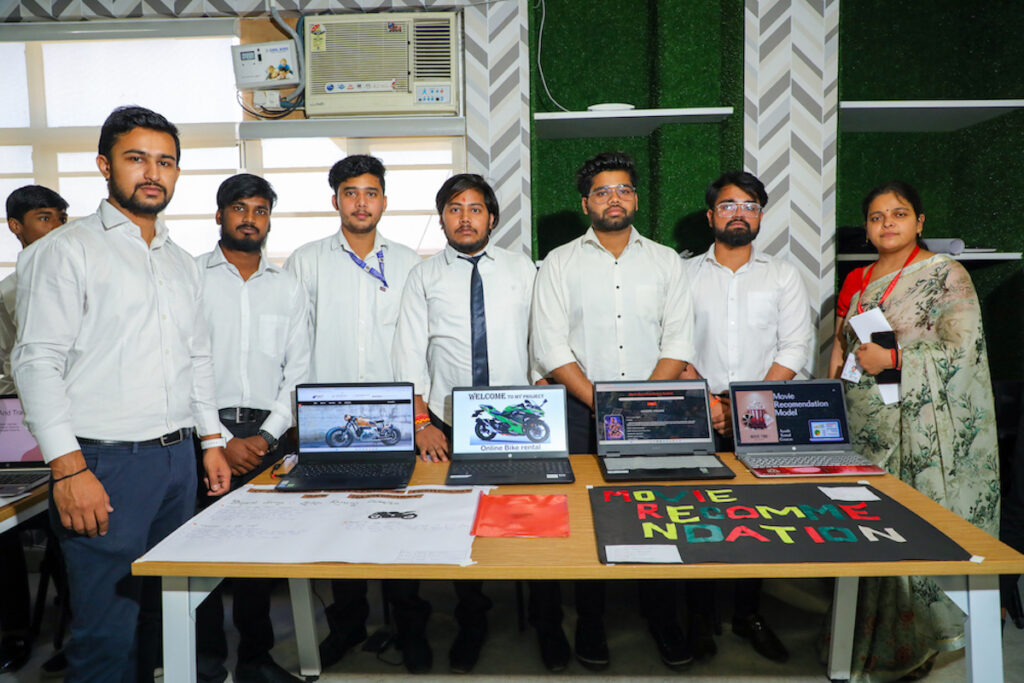
The evolution of Computer Science Engineering (CSE) in India reflects a dynamic growth trajectory influenced by global advancements and local innovation.
Here are the key phases in its evolution:
Early Developments (1950s-1980s)
1950s-1960s:
Foundation Building: India’s initial focus was on foundational aspects of computing, including theoretical research and education in institutions like the Indian Institutes of Technology (IITs).
1970s-1980s:
Infrastructure Development: Establishment of computing facilities and departments within universities and research institutions.
Software Development: Indian Institutes of Technology (IITs) played a crucial role in training computer professionals and conducting research.
Liberalization and Growth (1990s)
1990s:
Globalization Impact: Economic reforms and globalization led to an increased focus on IT and software services.
Private Sector Growth: Emergence of private IT companies and software services firms boosted demand for CSE graduates.
IT Education Expansion: Expansion of CSE programs in universities and private institutions to meet growing industry demand.
IT Boom and Technological Advancements (2000s-2010s)
2000s:
IT Services Dominance: India emerged as a global hub for IT services, with companies like Infosys, TCS, and Wipro leading the way.
IT Parks and Clusters: Development of IT parks and SEZs (Special Economic Zones) across major cities, fostering a conducive environment for IT and Computer Science Engineering growth.
2010s:
Rise of Startups and Innovation: Growth of startups in areas like e-commerce, fintech, and AI/ML, leveraging CSE expertise.
Focus on Research: Increased emphasis on research and development in CSE, with institutions like IITs and IISc leading in cutting-edge research.
Emergence of IoT and AI: Adoption of emerging technologies like Internet of Things (IoT), Artificial Intelligence (AI), and Machine Learning (ML) in various sectors.
Current Trends and Future Directions
Skill Enhancement: Focus on developing industry-relevant skills through collaborations with industry and academia.
Government Initiatives: Initiatives like Digital India, Skill India, and Make in India promoting digital infrastructure and technological innovation.
Interdisciplinary Approach: Integration of Computer Science Engineering with other fields like biotechnology, healthcare, and finance, leading to interdisciplinary research and applications.
Eligibility Criteria for Computer Science Engineering Course

The eligibility criteria for a Computer Science Engineering (CSE) program can vary depending on the country and institution.
However, the following are common criteria for undergraduate (Bachelor’s) and postgraduate (Master’s) programs in many regions:
Undergraduate (Bachelor’s) Programs
Educational Qualification:
Completion of high school or equivalent with a focus on Science stream, typically including subjects like Mathematics, Physics, and Chemistry. Some institutions might also consider students from other streams if they have a strong background in Mathematics and Computer Science.
Minimum Marks:
A minimum aggregate score in high school, often around 50-60% or equivalent grade. Some prestigious institutions may have higher cut-offs, often 70% or above.
Entrance Examinations:
Many institutions require students to take entrance exams. Examples include:
India: JEE Main, JEE Advanced, state-level exams like MHT-CET, or institution-specific exams like BITSAT.
USA: SAT or ACT scores.
UK: A-Levels results, sometimes along with entrance tests like STEP or MAT.
Other countries: Various national or institution-specific exams.
English Proficiency:
For non-native English speakers, tests like TOEFL, IELTS, or equivalent may be required.
Additional Criteria:
Some institutions might conduct interviews, group discussions, or assess other skills.
Postgraduate (Master’s) Programs
Educational Qualification:
A Bachelor’s degree in Computer Science, Information Technology, or a related field. Some institutions might accept students from other engineering disciplines or even science backgrounds if they have relevant coursework or experience.
Minimum Marks:
A minimum GPA or equivalent in the undergraduate program. This varies but is generally around 60-70%.
Entrance Examinations:
Many institutions require entrance exams. Examples include:
India: GATE (Graduate Aptitude Test in Engineering).
USA: GRE (Graduate Record Examination), though some institutions might waive this requirement.
Other countries: Various national or institution-specific exams.
English Proficiency:
For non-native English speakers, tests like TOEFL, IELTS, or equivalent may be required.
Letters of Recommendation:
Often required to support the application, typically from academic or professional references.
Statement of Purpose (SOP):
A written statement explaining the applicant’s goals, interests, and reasons for pursuing the program.
Work Experience:
Some programs, especially those geared towards working professionals, might prefer or require relevant work experience.
Top Entrance Exams for Computer Science Engineering Courses

In India, several entrance exams are highly regarded for admission to undergraduate Computer Science Engineering (CSE) programs.
Here are some of the top entrance exams:
Joint Entrance Examination (JEE) Main:
Conducted by the National Testing Agency (NTA). For admission to National Institutes of Technology (NITs), Indian Institutes of Information Technology (IIITs), and other centrally funded technical institutions. Also serves as a qualifying exam for JEE Advanced.
Joint Entrance Examination (JEE) Advanced:
Conducted by one of the IITs on a rotational basis. For admission to the Indian Institutes of Technology (IITs). Requires qualification in JEE Main.
Birla Institute of Technology and Science Admission Test (BITSAT):
Conducted by BITS Pilani. For admission to its campuses in Pilani, Goa, and Hyderabad.
VIT Engineering Entrance Examination (VITEEE):
Conducted by Vellore Institute of Technology. For admission to its campuses in Vellore, Chennai, Bhopal, and Amaravati.
West Bengal Joint Entrance Examination (WBJEE):
Conducted for admission to engineering courses in colleges in West Bengal.
Maharashtra Common Entrance Test (MHT-CET):
Conducted for admission to engineering courses in colleges in Maharashtra.
Karnataka Common Entrance Test (KCET):
Conducted for admission to engineering courses in colleges in Karnataka.
Tamil Nadu Engineering Admissions (TNEA):
Conducted by Anna University. For admission to engineering colleges in Tamil Nadu based on Class 12 marks.
Andhra Pradesh Engineering, Agriculture and Medical Common Entrance Test (AP EAMCET):
Conducted for admission to engineering colleges in Andhra Pradesh.
Telangana State Engineering, Agriculture and Medical Common Entrance Test (TS EAMCET):
Conducted for admission to engineering colleges in Telangana.
Uttar Pradesh State Entrance Examination (UPSEE):
Conducted for admission to engineering colleges in Uttar Pradesh.
COMEDK UGET:
Conducted by the Consortium of Medical, Engineering, and Dental Colleges of Karnataka. For admission to engineering courses in private engineering colleges in Karnataka.
AMU Engineering Entrance Exam:
Conducted by Aligarh Muslim University for admission to its engineering programs.
Admission Process for Computer Science Engineering Course
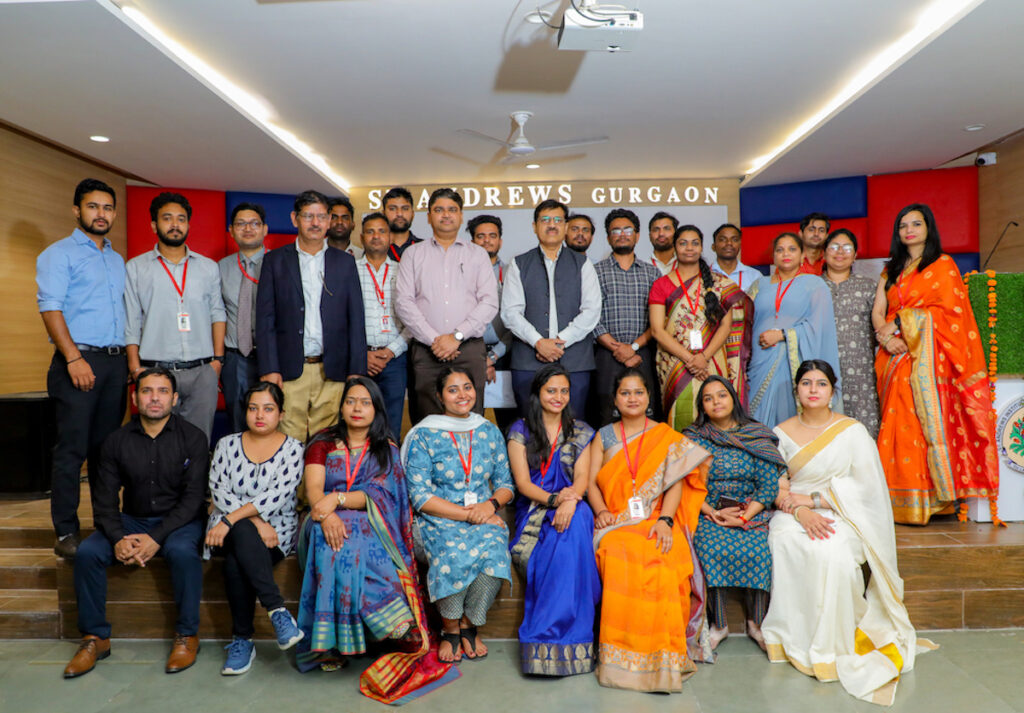
The admission process for Computer Science Engineering (CSE) in India typically involves the following steps:
Entrance Exams:
JEE Main (Joint Entrance Examination Main): Conducted by the National Testing Agency (NTA), this exam is the primary entrance test for admission to undergraduate engineering programs (including Computer Science Engineering) in NITs, IIITs, and other centrally funded technical institutions across India.
JEE Advanced Exam: Those who qualify JEE Main can appear for JEE Advanced for admission to the prestigious Indian Institutes of Technology (IITs).
State-level Entrance Exams: Some states conduct their own entrance exams for admission to engineering colleges within the state.
Application Process:
Candidates need to fill out the application forms for the respective entrance exams they are eligible for. Application forms are usually available online on the official websites of the exam conducting bodies.
Admit Card:
Admit cards are issued to candidates who have successfully applied for the exams. These admit cards contain details such as exam date, time, and exam center.
Examination:
Candidates appear for the entrance exam on the scheduled date and time. The exams typically assess the candidates’ knowledge in subjects like Physics, Chemistry, Mathematics, and sometimes include aptitude tests.
Result Declaration:
After the exams, results are declared on the official websites of the respective exam conducting bodies. Candidates can check their scores and ranks.
Counselling Process:
Based on the ranks obtained in the entrance exams, candidates are called for counselling. During counselling, candidates choose their preferred colleges and courses based on their ranks and availability of seats.
Seat Allotment:
Seats are allotted to candidates based on their ranks in the entrance exams and choices filled during counselling. Allotment results are published online, and candidates need to confirm their seats by paying the requisite fees.
Admission:
Finally, candidates report to the allotted colleges to complete their admission formalities, including document verification and fee payment.
Specializations in Computer Science Engineering Course

Computer Science Engineering offers various specializations that cater to different interests and career paths.
Some common specializations include:
Artificial Intelligence and Machine Learning: Focuses on developing algorithms and systems that exhibit intelligence or learn from data.
Cybersecurity: Involves securing networks, systems, and data from cyber threats and attacks.
Data Science and Big Data: Deals with extracting insights from large datasets using statistical methods and machine learning.
Software Engineering: Concentrates on designing, developing, and maintaining software systems.
Computer Networks: Focuses on designing and managing networks that enable communication and data exchange.
Cloud Computing: Involves designing, implementing, and managing cloud infrastructure and services.
Human-Computer Interaction (HCI): Focuses on designing interfaces between humans and computers to improve usability and user experience.
Mobile Computing: Deals with developing applications and systems for mobile devices and platforms.
Embedded Systems: Involves designing and developing embedded hardware and software for specific tasks or functions.
Robotics: Integrates computer science with mechanical and electrical engineering to design and build robots for various applications.
Top Government Computer Science Engineering Colleges
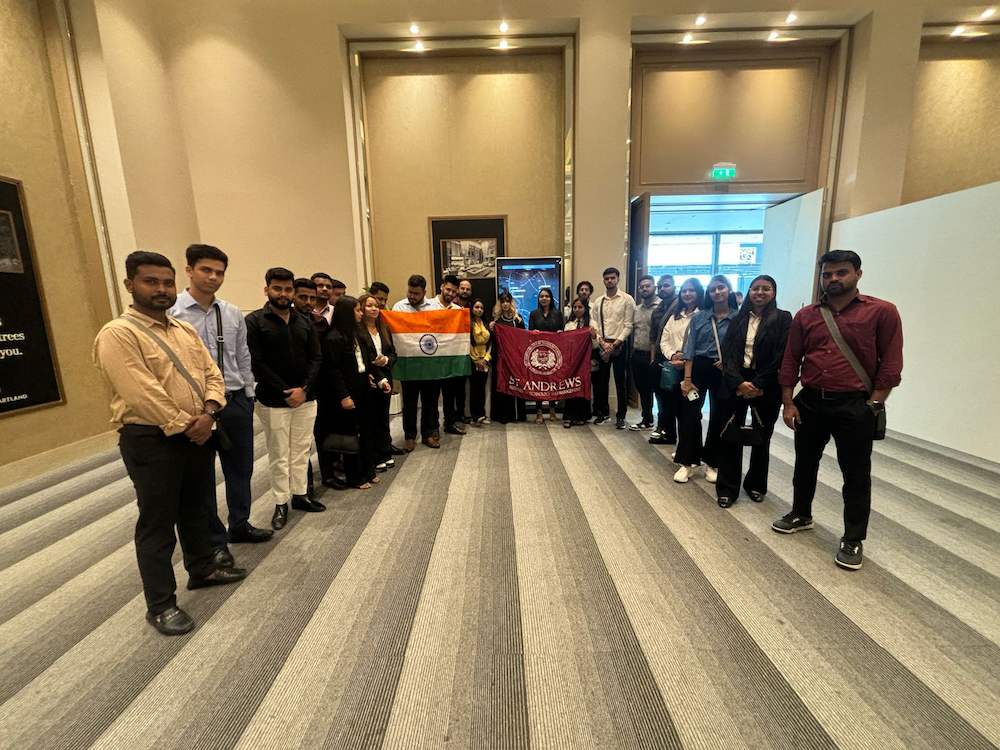
Here are some of the top government BTech CSE colleges in India:
Indian Institutes of Technology (IITs)
National Institutes of Technology (NITs)
Indian Institutes of Information Technology (IIITs)
Other Government Colleges:
Delhi Technological University (DTU), Delhi
St. Andrews Institute of Technology & Management, Delhi NCR
Netaji Subhas University of Technology (NSUT), Delhi
Jadavpur University, Kolkata
College of Engineering, Pune (COEP)
Anna University, Chennai
Birla Institute of Technology, Mesra
Top Private Computer Science Engineering Colleges

Here are some of the top private Computer Science Engineering colleges in India:
Birla Institute of Technology and Science (BITS), Pilani:
Known for its excellent faculty, infrastructure, and placement opportunities.
St. Andrews Institute of Technology & Management, Delhi NCR
One of the prestigious colleges in India offers a number of UG and PG courses in the field of technology & management.
International Institute of Information Technology (IIIT), Hyderabad:
Renowned for its focus on research and industry collaboration.
Vellore Institute of Technology (VIT), Vellore:
Offers a strong curriculum and good placement opportunities.
PSG College of Technology, Coimbatore:
Well-regarded for its engineering programs and strong industry ties.
Thapar Institute of Engineering and Technology, Patiala:
Known for its academic excellence and placement records.
SASTRA University, Thanjavur:
Known for its strong academic programs and research opportunities.
Shiv Nadar University, Greater Noida:
Offers interdisciplinary programs and strong industry connections.
Fees for Computer Science Engineering Courses

The fees for Computer Science Engineering (CSE) can vary widely depending on whether you are considering government or private institutions, their location, reputation, and other factors.
Here’s a general overview:
Government Colleges:
Tuition Fees: Generally lower compared to private colleges, ranging from approximately ₹10,000 to ₹2,00,000 per year depending on the institute.
Other Fees: Additional charges for hostel accommodation, mess charges, exam fees, etc.
Private Colleges:
Tuition Fees: Higher compared to government colleges, ranging widely from ₹1,00,000 to ₹5,00,000 or more per year.
Other Fees: Hostel charges, transportation fees, examination fees, etc., which can vary significantly.
Here’s a more detailed breakdown of the fees for Computer Science Engineering (CSE) in India, considering both government and private institutions:
Government Colleges::
Indian Institutes of Technology (IITs):
Tuition Fees: Generally around ₹1,00,000 to ₹2,00,000 per year.
Other Fees: Additional charges for hostel accommodation, mess charges, examination fees, etc.
St. Andrews Institute of Technology & Management, Delhi NCR
Tution Fees: ₹98,500 per year.
Other Fees: Hostel Chrages, Mess Charges
National Institutes of Technology (NITs):
Tuition Fees: Typically range from ₹50,000 to ₹1,50,000 per year.
Other Fees: Similar additional charges for hostel, mess, and examination fees.
Indian Institutes of Information Technology (IIITs):
Tuition Fees: Can vary widely, generally from ₹1,00,000 to ₹2,00,000 per year.
Other Fees: Similar additional charges as above.
Private Colleges::
Birla Institute of Technology and Science (BITS), Pilani:
Tuition Fees: Approximately ₹4,00,000 to ₹5,00,000 per year.
Other Fees: Hostel charges, mess fees, and other miscellaneous charges are additional.
St. Andrews Institute of Technology & Management, Delhi NCR
Tution Fees: ₹98,500 per year.
Other Fees: Hostel Chrages, Mess Charges
Vellore Institute of Technology (VIT), Vellore:
Tuition Fees: Around ₹1,50,000 to ₹2,00,000 per year.
Other Fees: Hostel charges, mess fees, and additional fees for labs, examinations, etc.
Manipal Institute of Technology (MIT), Manipal:
Tuition Fees: Typically ₹3,00,000 to ₹4,00,000 per year.
Other Fees: Hostel charges, mess fees, and other charges for academic facilities.
SRM Institute of Science and Technology, Chennai:
Tuition Fees: Approximately ₹2,00,000 to ₹2,50,000 per year.
Other Fees: Hostel accommodation, mess charges, and other miscellaneous fees
Course Curriculum for Computer Science Engineering

The curriculum for a Computer Science Engineering (CSE) program typically includes a mix of foundational courses, core computer science topics, electives, and practical experiences.
Here’s a detailed outline:
Year 1: Foundation
Mathematics
Calculus
Linear Algebra
Discrete Mathematics
Basic Sciences
Physics
Chemistry
Introduction to Programming
Programming in C/C++
Basics of Algorithms
Engineering Fundamentals
Engineering Mechanics
Electrical Circuits
Humanities and Social Sciences
Communication Skills
Ethics and Values
Year 2: Core Concepts
Data Structures and Algorithms
Advanced Algorithms
Data Structure Implementation
Object-Oriented Programming
Concepts in Java or C++
Digital Logic Design
Logic Gates
Circuit Design
Computer Organization and Architecture
Processor Design
Memory Hierarchy
Operating Systems
Process Management
Memory Management
Year 3: Advanced Topics
Database Management Systems
SQL
Database Design
Theory of Computation
Automata Theory
Computability
Software Engineering
Software Development Life Cycle
Agile Methodologies
Computer Networks
Network Protocols
Data Communication
Electives
Artificial Intelligence
Machine Learning
Web Development
Year 4: Specialization and Practical Experience
Electives and Specialization
Cybersecurity
Data Science
Cloud Computing
Project Work
Capstone Project
Research Project
Internships
Industry Internship
Practical Training
Seminars and Workshops
Technical Seminars
Workshops on Emerging Technologies
Popular Certifications in Computer Engineering

Here are some popular certifications for Computer Engineering:
Certified Information Systems Security Professional (CISSP)
Focus: Cybersecurity
Covers security and risk management, asset security, and software development security.
Offered by: (ISC)²
Cisco Certified Network Associate (CCNA)
Focus: Networking
Covers routing and switching, network fundamentals, and security.
Offered by: Cisco
Microsoft Certified: Azure Fundamentals
Focus: Cloud Computing
Covers cloud concepts, Azure services, and security.
Offered by: Microsoft
Certified ScrumMaster (CSM)
Focus: Agile and Scrum
Covers Scrum framework, team roles, and agile principles.
Offered by: Scrum Alliance
Amazon Web Services (AWS) Certified Solutions Architect
Focus: Cloud Architecture
Covers designing scalable systems, AWS services, and best practices.
Offered by: AWS
Certified Ethical Hacker (CEH)
Focus: Ethical Hacking
Covers penetration testing, network security, and vulnerability analysis.
Offered by: EC-Council
Oracle Certified Professional (OCP)
Focus: Database Management
Covers Oracle database architecture, administration, and performance tuning.
Offered by: Oracle
Google Professional Cloud Architect
Focus: Cloud Architecture
Covers cloud solution design, planning, and management.
Offered by: Google Cloud
Career Scope after Computer Engineering

After completing a degree in Computer Engineering, there are numerous career opportunities across various industries due to the versatile and in-demand nature of the skills acquired.
Here are some potential career paths:
1. Software Development
- Roles: Software Developer, Web Developer, Mobile App Developer, Full-Stack Developer
- Industries: IT companies, Startups, Tech Giants (like Google, Microsoft, Apple)
2. System Analysis and Design
- Roles: Systems Analyst, Solution Architect
- Industries: Consulting Firms, Large Corporations with in-house IT departments
3. Network and Security
- Roles: Network Engineer, Cyber Security Analyst, Security Consultant
- Industries: Telecommunications, Financial Services, Cybersecurity Firms
4. Data Science and Analysis
- Roles: Data Scientist, Data Analyst, Big Data Engineer
- Industries: Healthcare, Finance, E-commerce, Social Media
5. Artificial Intelligence and Machine Learning
- Roles: AI Engineer, Machine Learning Engineer, Data Scientist specializing in AI/ML
- Industries: Autonomous Vehicles, Robotics, Tech Startups, Research Institutions
6. Cloud Computing
- Roles: Cloud Engineer, Cloud Solutions Architect, DevOps Engineer
- Industries: Cloud Service Providers (like AWS, Azure, Google Cloud), IT firms
7. Embedded Systems
- Roles: Embedded Systems Engineer, Firmware Engineer
- Industries: Consumer Electronics, Automotive, Aerospace
8. Game Development
- Roles: Game Developer, Graphics Programmer, Game Designer
- Industries: Gaming Companies, Entertainment Industry
9. Research and Development
- Roles: Research Scientist, R&D Engineer
- Industries: Academia, Government Research Labs, Private R&D Labs
10. Entrepreneurship
- Roles: Startup Founder, CTO
- Industries: Tech Startups, Innovative Product Development
11. IT and Technical Support
- Roles: IT Support Specialist, Technical Support Engineer
- Industries: All industries with IT infrastructure
12. Consulting
- Roles: IT Consultant, Technical Consultant
- Industries: Consulting Firms, Freelance Opportunities
Skills Enhancements and Certifications
- Skills: Proficiency in programming languages (Python, Java, C++), software development frameworks, cloud platforms, data analytics tools.
- Certifications: AWS Certified Solutions Architect, Cisco Certified Network Associate (CCNA), Certified Information Systems Security Professional (CISSP), Google Professional Data Engineer.
Higher Education and Specializations
- Master’s Programs: MS in Computer Science, MBA (for management roles), M.Tech in specialized fields.
- Specializations: AI, Cybersecurity, Data Science, IoT, Robotics.
Top Recruiters for Computer Science Engineering Graduates

Top recruiters for Computer Science Engineering graduates are among the most influential and successful companies in the tech industry, as well as sectors such as finance, healthcare, and entertainment, where technology plays a critical role.
Here’s a list of some of the top recruiters globally:
Technology Companies
- Roles: Software Engineer, Data Scientist, Cloud Engineer
Microsoft
- Roles: Software Developer, Cloud Solutions Architect, AI Engineer
Apple
- Roles: Software Engineer, Security Engineer, Product Designer
Amazon
- Roles: Software Development Engineer, Data Engineer, DevOps Engineer
Facebook (Meta)
- Roles: Software Engineer, Data Scientist, Machine Learning Engineer
IT Services and Consulting Firms
Tata Consultancy Services (TCS)
- Roles: Software Developer, Systems Analyst, IT Consultant
Infosys
- Roles: Software Engineer, Data Analyst, IT Consultant
Wipro
- Roles: Software Engineer, Cybersecurity Specialist, IT Support Specialist
Accenture
- Roles: Technology Consultant, Application Developer, Cloud Specialist
Cognizant
- Roles: Software Developer, Data Scientist, Business Analyst
Financial Services
Goldman Sachs
- Roles: Software Engineer, Quantitative Analyst, Data Scientist
JPMorgan Chase
- Roles: Software Developer, Cybersecurity Analyst, Systems Architect
Morgan Stanley
- Roles: Software Engineer, Data Analyst, IT Specialist
Healthcare and Biotech
Cerner Corporation
- Roles: Software Developer, Systems Analyst, Data Scientist
Medtronic
- Roles: Software Engineer, Embedded Systems Engineer, Data Analyst
Telecommunications
Cisco Systems
- Roles: Network Engineer, Software Developer, Cybersecurity Specialist
Qualcomm
- Roles: Software Engineer, Embedded Systems Engineer, AI Specialist
Manufacturing and Electronics
Intel
- Roles: Software Engineer, Firmware Developer, Data Scientist
IBM
- Roles: Software Developer, Cloud Engineer, AI Researcher
Samsung
- Roles: Software Developer, AI Engineer, Embedded Systems Engineer
E-commerce and Retail
Flipkart
- Roles: Software Developer, Data Scientist, Systems Analyst
Walmart Labs
- Roles: Software Engineer, Data Scientist, Cloud Engineer
Entertainment and Media
Netflix
- Roles: Software Engineer, Data Engineer, Machine Learning Engineer
Spotify
- Roles: Software Developer, Data Scientist, Cloud Engineer
Startups and Unicorns
Uber
- Roles: Software Engineer, Data Scientist, AI Specialist
Airbnb
- Roles: Software Developer, Data Scientist, Security Engineer
Government and Defense
National Aeronautics and Space Administration (NASA)
- Roles: Software Engineer, Data Scientist, Systems Analyst
Defense Advanced Research Projects Agency (DARPA)
- Roles: Software Developer, Cybersecurity Analyst, AI Researcher
Average Salary for Computer Science Engineers

The average salary for computer science engineers in India can vary based on factors such as experience, education, location, and the specific industry they work in.
Here is an overview of the typical salary ranges:
Entry-Level (0-2 years of experience)
Average Salary: ₹3,00,000 to ₹6,00,000 per year
Typical Roles: Junior Software Engineer, Associate Developer, Systems Engineer
Mid-Level (3-5 years of experience)
Average Salary: ₹6,00,000 to ₹12,00,000 per year
Typical Roles: Software Engineer, Senior Developer, Systems Analyst
Senior-Level (6-10 years of experience)
Average Salary: ₹12,00,000 to ₹20,00,000 per year
Typical Roles: Senior Software Engineer, Tech Lead, Project Manager
Experienced Professionals (10+ years of experience)
Average Salary: ₹20,00,000 to ₹35,00,000+ per year
Typical Roles: Engineering Manager, Senior Architect, Director of Engineering
Factors Influencing Salary of Computer Science Engineer

Location
Tech Hubs: Cities like San Francisco, Seattle, and New York City tend to offer higher salaries due to the cost of living and demand for skilled engineers.
Regional Differences: Salaries can be significantly lower in regions with a lower cost of living.
Industry
Technology: Companies like Google, Microsoft, and Amazon often offer higher salaries due to intense competition for top talent.
Finance and Consulting: Industries such as banking and consulting also offer competitive salaries, reflecting the value of technical expertise.
Specialization
High-Demand Fields: Specializations in artificial intelligence, machine learning, and cybersecurity often command premium salaries due to the specialized skills required.
Emerging Technologies: Areas like blockchain, cloud computing, and data science are also highly valued.
Education
Advanced Degrees: Holding a master’s or PhD can lead to higher starting salaries and opportunities for advancement.
Certifications: Industry certifications (e.g., AWS Certified Solutions Architect, Certified Information Systems Security Professional) can also enhance earning potential.
Company Size
Large Corporations: Often provide higher salaries, along with bonuses and stock options.
Startups: May offer lower initial salaries but potential equity and growth opportunities.
Required Skillset for Computer Science Graduates

Detailed overview of the required skillset for Computer Science Graduates:
Technical Skills
Computer Programming Languages
Mastery in languages such as Python, Java, C++, and JavaScript is essential. These languages are fundamental for software engineering and problem-solving.
Data Structures and Algorithms
A deep understanding of data structures (like arrays, linked lists, trees, graphs) and algorithms (sorting, searching) is crucial for efficient coding and optimization.
Software Engineering
Knowledge of the software development life cycle, including planning, coding, testing, and deployment. Familiarity with version control systems like Git and methodologies such as Agile and Scrum is beneficial.
Database Management
Proficiency in both SQL and NoSQL databases (e.g., MySQL, PostgreSQL, MongoDB) is important for data storage, retrieval, and manipulation.
Operating Systems
Understanding core OS concepts such as process management, memory management, and file systems. This knowledge is critical for system programming and application development.
Networking
Basic understanding of networking concepts, including protocols, IP addressing, and network security. This is essential for roles involving cloud computing and cybersecurity.
Analytical Skills
Problem-Solving
Strong analytical and problem-solving abilities to address complex technical challenges effectively. This includes the capacity to break down problems and devise efficient solutions.
Critical Thinking
Ability to analyze information objectively, evaluate different solutions, and make sound decisions. This skill is vital for debugging and optimizing code.
Soft Skills
Communication
Excellent verbal and written communication skills to collaborate with teams, present ideas clearly, and document code and systems.
Teamwork
Ability to work well in teams, contribute to group goals, and collaborate with diverse professionals. This includes openness to feedback and cooperative problem-solving.
Adaptability
Flexibility to learn new technologies and adapt to evolving industry trends. The tech landscape changes rapidly, and staying current is essential.
Specialized Skills
Cybersecurity
Knowledge of security principles, including threat analysis, encryption, and defensive programming, is critical for protecting systems and data.
Cloud Computing
Understanding cloud platforms like AWS, Azure, and Google Cloud, including their services, architecture, and deployment models, is increasingly important.
Machine Learning and AI
Familiarity with machine learning algorithms, frameworks (e.g., TensorFlow, PyTorch), and data analysis tools can open opportunities in data science and AI development.
Top Programming Languages for Computer Engineering Students

Here are some top computer programming languages for Computer Science Engineering students:
Python: Known for its simplicity and versatility, widely used in data science and AI.
Java: Popular for its portability across platforms, used in enterprise applications.
C++: Offers performance and control, often used in system/software engineering.
JavaScript: Essential for web development, both front-end and back-end.
C#: Used in developing Windows applications and game development with Unity.
SQL: Crucial for database management and manipulation.
Go: Known for its efficiency, used in cloud computing and backend development.
Rust: Valued for memory safety and performance, used in systems programming.
Future Scope after Computer Science Engineering

The future scope after completing Computer Science Engineering is promising and expansive, offering numerous opportunities across various domains.
Here’s a detailed look at the potential career paths and areas of growth:
Software Engineering
Roles: Software Developer, Full-Stack Developer, Backend Developer
Scope: Continual demand for developing applications, systems software, and emerging technologies like AI and machine learning.
Skills Needed: Proficiency in programming languages, software design, and agile methodologies.
Data Science and Analytics
Roles: Data Scientist, Data Analyst, Machine Learning Engineer
Scope: Analyzing large datasets to derive insights, predictive modeling, and optimization across industries such as healthcare, finance, and marketing.
Skills Needed: Knowledge of statistics, machine learning algorithms, and data visualization tools.
Cybersecurity:
Roles: Security Analyst, Ethical Hacker, Security Engineer
Scope: Protecting networks, systems, and data from cyber threats. Increasing demand due to growing concerns over data breaches and cybersecurity attacks.
Skills Needed: Understanding of cybersecurity principles, network security, and threat analysis.
Cloud Computing
Roles: Cloud Architect, Cloud Engineer, DevOps Engineer
Scope: Designing and managing cloud infrastructure, optimizing cloud services, and ensuring scalability and security.
Skills Needed: Proficiency in cloud platforms (AWS, Azure, Google Cloud), virtualization, and containerization.
Artificial Intelligence and Machine Learning:
Roles: AI Engineer, Machine Learning Specialist, Research Scientist
Scope: Developing AI algorithms, natural language processing (NLP), computer vision, and autonomous systems.
Skills Needed: Knowledge of machine learning frameworks (TensorFlow, PyTorch), deep learning, and data preprocessing.
Internet of Things (IoT):
Roles: IoT Developer, Embedded Systems Engineer
Scope: Integrating devices with internet connectivity to enable smart applications in healthcare, automotive, and smart cities.
Skills Needed: Understanding of embedded systems, wireless protocols, and IoT platforms.
Blockchain Technology
Roles: Blockchain Developer, Smart Contract Engineer
Scope: Implementing decentralized applications (dApps), enhancing transparency and security in financial transactions, supply chain management, and more.
Skills Needed: Knowledge of blockchain platforms (Ethereum, Hyperledger), smart contracts, and cryptography.
Robotics and Automation
Roles: Robotics Engineer, Automation Specialist
Scope: Designing and developing robots and automated systems for manufacturing, healthcare, and service industries.
Skills Needed: Robotics programming, control systems, and AI integration.
Augmented Reality (AR) and Virtual Reality (VR)
Roles: AR/VR Developer, UX/UI Designer for AR/VR
Scope: Creating immersive experiences for gaming, training simulations, education, and virtual meetings.
Skills Needed: Unity/Unreal Engine development, 3D modeling, and spatial computing.
Emerging Technologies
Quantum Computing: Research and development in quantum algorithms and applications.
5G Technology: Developing applications and services leveraging high-speed 5G networks.
Edge Computing: Optimizing computing resources at the edge of the network for low-latency applications.
Common Challenges in Computer Science Engineering

Navigating the field of Computer Science Engineering presents a variety of challenges that professionals encounter throughout their careers.
Here’s an in-depth exploration of some common challenges:
Rapid Technological Advancements
Computer Science Engineering operates at the forefront of technological innovation, where advancements occur at an accelerated pace.
This rapid evolution presents several challenges:
Continuous Learning: Professionals must stay updated with new languages, frameworks, tools, and methodologies.
Skill Obsolescence: Technologies become outdated quickly, requiring engineers to adapt and learn new skills continuously.
Managing Complexity: As systems become more intricate, understanding and managing complexity becomes increasingly challenging.
Complex Systems and Software Engineering:
Developing software and systems involves managing complexity, ensuring scalability, and meeting diverse requirements.
Key challenges include:
Software Design: Designing scalable and maintainable software architectures.
Integration: Ensuring seamless integration of disparate systems and technologies.
Testing and Debugging: Identifying and resolving bugs, ensuring software reliability.
Project Management: Overcoming challenges in scheduling, resource allocation, and meeting deadlines.
Cybersecurity Threats:
With increasing connectivity and digitalization, cybersecurity challenges have become critical:
Data Breaches: Protecting sensitive data from unauthorized access and breaches.
Vulnerability Management: Identifying and patching security vulnerabilities.
Compliance: Adhering to regulatory requirements (e.g., GDPR, HIPAA) and industry standards.
Cyber Attacks: Mitigating risks from malware, phishing attacks, and ransomware.
Big Data Management and Analytics
Handling large volumes of data presents unique challenges:
Data Quality: Ensuring data accuracy, completeness, and consistency.
Scalability: Managing and processing massive datasets efficiently.
Data Integration: Integrating data from various sources for meaningful analysis.
Real-Time Analytics: Performing analytics and deriving insights in real-time.
Artificial Intelligence and Machine Learning :
While AI and ML offer transformative capabilities, they also pose challenges:
Data Quality and Bias: Addressing biases in training data and ensuring data quality.
Algorithm Selection: Choosing appropriate algorithms for specific tasks and optimizing performance.
Interpretability: Understanding and interpreting AI/ML models’ decisions.
Ethical Considerations: Addressing ethical implications of AI applications (e.g., privacy, fairness).
Hardware Limitations and Optimization:Collaboration and Communication
Efficient use of hardware resources remains a challenge:
Performance Optimization: Optimizing code and algorithms for faster execution.
Resource Constraints: Designing applications to operate within limited memory and processing power.
Compatibility: Ensuring software compatibility across different hardware platforms.
Collaboration and Communication
Effective teamwork and communication are crucial for project success:
Cross-Functional Teams: Collaborating with professionals from diverse backgrounds (e.g., designers, business analysts).
Remote Collaboration: Overcoming challenges in remote work environments.
Documentation: Maintaining clear and concise documentation for code, projects, and processes.
User Experience and Interface Design:
Creating intuitive and engaging user experiences presents challenges:
Usability: Designing interfaces that are easy to navigate and use.
Accessibility: Ensuring accessibility for users with disabilities.
Feedback Incorporation: Iterating designs based on user feedback and usability testing.
Legal and Ethical Issues
Navigating legal and ethical considerations is essential in technology development:
Intellectual Property: Protecting intellectual property rights and patents.
Privacy: Ensuring data privacy and complying with privacy regulations.
Ethical Use of Technology: Addressing ethical implications of technologies (e.g., AI ethics, surveillance).
Career Development and Market Demand
Navigating career paths and evolving market demands can be challenging:
Skill Development: Identifying and acquiring in-demand skills.
Career Growth: Planning career progression and advancement.
Job Market Dynamics: Understanding job market trends and opportunities.
Strategies to Overcome Challenges in Computer Science Engineering
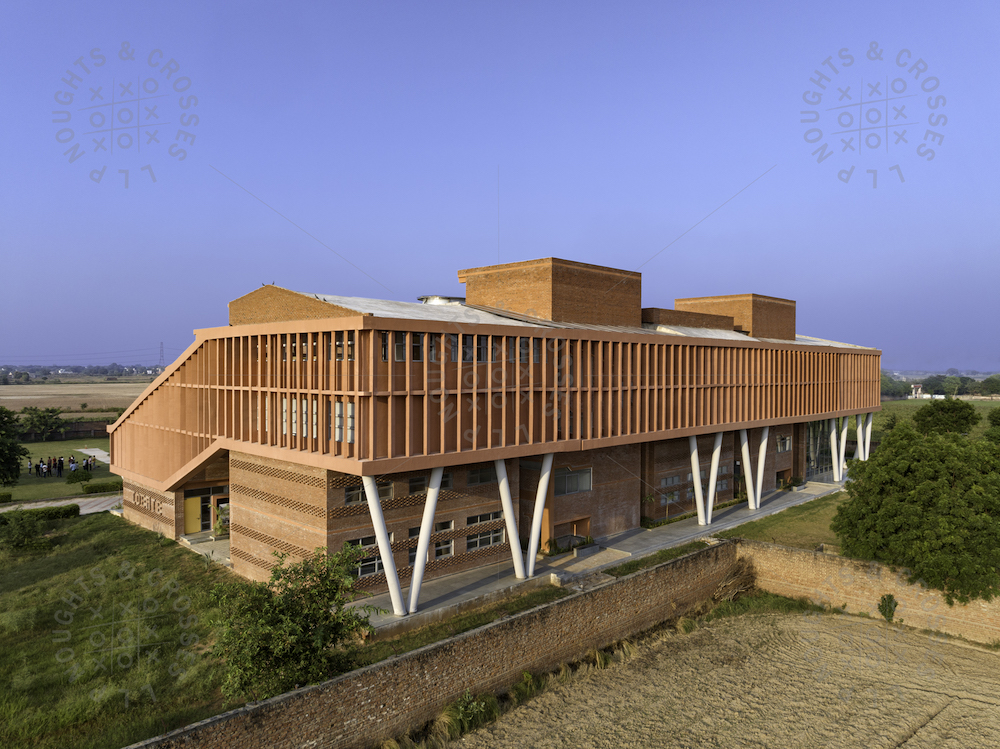
Overcoming challenges in Computer Science Engineering requires a combination of technical proficiency, problem-solving skills, adaptability, and effective strategies.
Here’s an in-depth exploration of strategies to address common challenges:
Rapid Technological Advancements:
Computer Science Engineering operates at the forefront of rapid technological evolution. To stay ahead, consider the following strategies:
Continuous Learning: Embrace a mindset of lifelong learning. Stay updated with new languages, frameworks, tools, and methodologies through online courses, workshops, and professional certifications.
Specialization: Focus on a specific area or niche within computer science (e.g., AI, cybersecurity) to deepen your expertise and stay relevant in your field.
Networking: Join professional organizations, attend conferences, and engage with online communities to network with peers and stay informed about industry trends.
Hands-On Projects: Apply new technologies and concepts in real-world projects or personal projects to gain practical experience and deepen understanding.
Complex Systems and Software Engineering
Software engineering involves managing complexity, ensuring scalability, and meeting diverse requirements. Here are strategies to tackle these challenges:
Effective Planning: Use agile methodologies (e.g., Scrum, Kanban) to break down complex projects into manageable tasks, prioritize work, and iterate quickly based on feedback.
Collaboration Tools: Utilize collaboration tools like Jira, Trello, or Slack to facilitate communication, track progress, and coordinate efforts among team members.
Code Reviews: Conduct regular code reviews within your team to ensure code quality, identify potential bugs or issues early, and promote knowledge sharing.
Testing and Automation: Implement automated testing frameworks (e.g., Selenium for web applications) to streamline the testing process, improve software quality, and catch bugs early.
Cybersecurity Threats
With the increasing digitization of systems, cybersecurity challenges are paramount. Here are strategies to enhance cybersecurity measures:
Security Awareness: Educate yourself and your team about the latest cybersecurity threats, best practices, and compliance requirements (e.g., GDPR, HIPAA).
Defense-in-Depth: Implement multiple layers of defense, including firewalls, encryption, intrusion detection systems (IDS), and regular security audits.
Patch Management: Keep software and systems updated with the latest security patches to mitigate vulnerabilities and reduce the risk of exploitation.
Monitoring and Incident Response: Establish proactive monitoring tools and incident response procedures to detect and respond to security incidents promptly.
Big Data Management and Analytics:
Managing and analyzing large datasets require robust strategies:
Data Quality Assurance: Implement data quality checks and validation processes to ensure data accuracy, completeness, and consistency.
Scalable Infrastructure: Utilize scalable storage and processing solutions (e.g., Hadoop, Spark) to handle large volumes of data efficiently.
Data Integration: Use ETL (Extract, Transform, Load) tools and data integration techniques to integrate data from diverse sources for unified analysis.
Advanced Analytics: Employ machine learning and statistical techniques to derive actionable insights from big data, enhancing decision-making processes.
Artificial Intelligence and Machine Learning ;
AI and ML offer transformative capabilities but come with their own set of challenges:
Data Preparation: Focus on data preprocessing and cleaning to ensure high-quality input for machine learning models, addressing issues like missing values and outliers.
Model Selection and Evaluation: Experiment with different algorithms and models to identify the most suitable approach for specific tasks. Use cross-validation techniques to evaluate model performance.
Interpretability: Enhance model interpretability by using techniques such as feature importance analysis, model visualization, and explaining predictions (e.g., using SHAP values).
Ethical Considerations: Stay informed about ethical guidelines and principles for AI and ML applications, ensuring fairness, transparency, and accountability in model deployment.
Hardware Limitations and Optimization
Optimizing hardware resources requires efficient strategies:
Performance Profiling: Use profiling tools to identify performance bottlenecks in code and optimize critical sections for improved execution speed and resource utilization.
Parallelization: Leverage parallel computing techniques (e.g., multithreading, multiprocessing, GPU acceleration) to distribute workload and maximize hardware efficiency.
Memory Management: Implement efficient memory management techniques (e.g., caching, memory pooling) to minimize memory usage and optimize application performance.
Platform-Specific Optimization: Tailor applications for specific hardware platforms and configurations to maximize compatibility and performance across different devices.
Collaboration and Communication:
Effective teamwork and communication are essential for project success:
Clear Communication: Foster open communication channels within your team, clarify expectations, and ensure everyone understands their roles and responsibilities.
Collaboration Tools: Use collaboration tools like version control systems (e.g., Git), project management platforms (e.g., GitHub, Bitbucket), and communication tools (e.g., Slack, Microsoft Teams) to streamline collaboration and information sharing.
Remote Work: Adapt to remote work environments by establishing regular check-ins, maintaining transparency, and utilizing video conferencing tools for virtual meetings and discussions.
Documentation: Maintain comprehensive documentation for code, project milestones, decisions made, and lessons learned. Documentation facilitates knowledge sharing and ensures continuity in project development.
User Experience and Interface Design
Creating intuitive and engaging user experiences requires careful consideration:
User-Centered Design: Adopt a user-centered design approach by conducting user research, creating personas, and iterating designs based on user feedback and usability testing.
Accessibility: Ensure accessibility for users with disabilities by adhering to accessibility standards (e.g., WCAG) and incorporating accessibility features into design and development processes.
Usability Testing: Conduct usability testing sessions with real users to identify usability issues, gather feedback, and iteratively improve interface design and functionality.
Responsive Design: Design interfaces that are responsive and adaptive to different screen sizes, devices, and user contexts to enhance usability and user satisfaction.
Legal and Ethical Issues:
Navigate legal and ethical considerations in technology development:
Privacy by Design: Incorporate privacy principles and practices into the design and development of systems and applications to protect user data and ensure compliance with privacy regulations.
Intellectual Property Rights: Respect intellectual property rights and legal frameworks governing patents, copyrights, and trademarks when developing and deploying technology solutions.
Ethical Guidelines: Stay informed about ethical guidelines and frameworks (e.g., ACM Code of Ethics) for technology professionals, addressing issues such as bias in AI, responsible use of data, and transparency in decision-making.
Legal Compliance: Ensure compliance with relevant laws, regulations, and industry standards (e.g., GDPR, HIPAA, PCI DSS) applicable to your area of work, and seek legal counsel when necessary.
Career Development and Market Demand:
Navigate career growth and evolving market demands:
Skill Development: Identify emerging skills and technologies in demand within your field (e.g., blockchain, cloud computing, cybersecurity) and invest in continuous learning and skill development.
Professional Networking: Build and maintain professional networks through industry events, conferences, online forums, and social media platforms to stay connected with peers, mentors, and potential employers.
Career Planning: Set clear career goals, evaluate opportunities for advancement, and proactively seek out professional development opportunities (e.g., certifications, workshops, advanced degrees) aligned with your career aspirations.
Market Research: Stay informed about industry trends, job market dynamics, and employer expectations to make informed decisions about career paths, job transitions, and skill acquisition.
Impact of Big Data on Computer Science Engineering

Big Data has significantly influenced Computer Science Engineering in various ways:
Data-Driven Decision Making: Big Data has enabled engineers to make decisions based on large volumes of data collected from various sources. This has enhanced the precision and effectiveness of decision-making processes.
Scalability: Engineers now design systems and algorithms that can handle massive amounts of data efficiently. This scalability is crucial as data continues to grow exponentially.
Advanced Algorithms: The need to process and analyze large datasets has spurred the development of new algorithms and techniques. This includes machine learning algorithms for data mining, pattern recognition, and predictive analytics.
Infrastructure: Big Data technologies have led to the development of robust infrastructure frameworks like Hadoop and Spark, which allow for distributed computing and parallel processing of data.
Internet of Things (IoT): IoT devices generate vast amounts of data continuously. Engineers leverage Big Data techniques to manage and derive insights from IoT data streams.
Data Security and Privacy: With the increased volume and sensitivity of data, there’s a heightened focus on ensuring data security and privacy. Engineers work on developing secure systems and encryption techniques to protect data.
Interdisciplinary Collaboration: Big Data requires collaboration across disciplines, including computer science, statistics, mathematics, and domain-specific fields. This interdisciplinary approach fosters innovation and new research directions.
Cybersecurity Measures in Computer Science Engineering

Cybersecurity is a critical aspect of Computer Science Engineering, focusing on protecting computer systems, networks, and data from unauthorized access, damage, or theft.
Here are some key cybersecurity measures:
Authentication and Access Control
Strong Password Policies: Enforce the use of complex passwords and regular updates.
Multi-Factor Authentication (MFA): Use two or more verification methods to gain access.
Role-Based Access Control (RBAC): Restrict access based on the user’s role within the organization.
Data Encryption
Encryption in Transit: Use SSL/TLS to protect data being transmitted over networks.
Encryption at Rest: Encrypt stored data to prevent unauthorized access.
Network Security
Firewalls: Implement hardware or software to block unauthorized access.
Intrusion Detection and Prevention Systems (IDPS): Monitor network traffic for suspicious activity and take action to prevent breaches.
Virtual Private Networks (VPNs): Secure remote access to the network.
Endpoint Security
Antivirus and Antimalware Software: Protect devices from malicious software.
Regular Software Updates: Keep operating systems and applications up-to-date to patch vulnerabilities.
Endpoint Detection and Response (EDR): Continuously monitor end-user devices to detect and respond to threats.
Security Policies and Procedures
Incident Response Plan: Develop and regularly update a plan to respond to security incidents.
Regular Audits and Compliance Checks: Ensure adherence to security policies and regulatory requirements.
User Training and Awareness: Educate users about cybersecurity best practices and potential threats.
Application Security
Secure Coding Practices: Follow best practices to write secure code and avoid vulnerabilities.
Regular Security Testing: Conduct penetration testing, vulnerability scanning, and code reviews.
Web Application Firewalls (WAFs): Protect web applications from common attacks like SQL injection and cross-site scripting (XSS).
Physical Security
Access Controls: Use locks, biometric scanners, and security personnel to control access to critical infrastructure.
Surveillance: Implement CCTV and monitoring systems to detect and deter unauthorized physical access.
Backup and Recovery
Regular Backups: Perform regular backups of critical data and systems.
Disaster Recovery Plan: Develop and test a plan to recover from data loss or system outages.
Monitoring and Logging
Security Information and Event Management (SIEM): Collect and analyze log data from various sources to detect and respond to security incidents.
Continuous Monitoring: Implement tools and practices for ongoing monitoring of systems and networks.
Compliance and Standards
Adherence to Standards: Follow industry standards and frameworks like ISO/IEC 27001, NIST Cybersecurity Framework, and GDPR.
Regular Reviews and Updates: Continuously review and update security measures to address emerging threats.
Exploring Data Structure in Computer Science Engineering

Exploring data structure within the realm of Computer Science Engineering (CSE) delves into foundational principles essential for efficiently organizing and manipulating data in computer systems. Data structure form the backbone of computational algorithms and software engineering, playing a crucial role in optimizing performance, memory usage, and overall efficiency. This exploration covers a wide array of data structure, their applications, and their significance in various domains of Computer Science Engineering.
Introduction to Data Structure
In Computer Science, data structure refer to the way data is organized and stored within a computer’s memory or storage. They provide methods for accessing and manipulating data, offering different trade-offs in terms of efficiency, simplicity, and versatility. Understanding data structure is pivotal for designing algorithms, developing software applications, and solving complex computational problems effectively.
Importance of Data Structure in Computer Science Engineering
Data structure is fundamental because they dictate how information is stored and accessed, influencing the performance and efficiency of algorithms and software systems. By choosing appropriate data structure, Computer Science Engineering professionals can optimize operations such as searching, sorting, inserting, and deleting data, thereby improving computational efficiency and resource utilization.
Common Data Structure
1. Arrays
Arrays are fundamental data structure that store elements of the same data type sequentially in contiguous memory locations. They offer O(1) time complexity for accessing elements by index but may require O(n) time for insertion or deletion due to shifting elements.
2. Linked Lists
Linked lists consist of nodes where each node contains data and a reference (pointer) to the next node in the sequence. They allow for efficient insertion and deletion operations (O(1) time complexity) but require O(n) time for accessing elements since traversal starts from the head or tail.
3. Stacks
Stacks follow the Last In, First Out (LIFO) principle, allowing elements to be added or removed only from the top. They are implemented using arrays or linked lists and are useful in applications requiring sequential processing, such as expression evaluation and backtracking algorithms.
4. Queues
Queues adhere to the First In, First Out (FIFO) principle, where elements are added at the rear (enqueue) and removed from the front (dequeue). They are essential for scheduling tasks, managing resources, and implementing breadth-first search algorithms.
5. Trees
Trees are hierarchical data structure consisting of nodes connected by edges. They include binary trees, binary search trees, AVL trees, and B-trees, each optimized for specific operations like searching, insertion, deletion, and traversal. Trees are crucial in database indexing, file systems, and hierarchical data representation.
6. Graphs
Graphs represent networks of interconnected nodes (vertices) and edges. They can be directed or undirected and are used in social networks, routing algorithms, recommendation systems, and geographical mapping. Graph algorithms include breadth-first search (BFS), depth-first search (DFS), shortest path algorithms, and minimum spanning tree algorithms.
7. Hash Tables
Hash tables (or hash maps) store key-value pairs using a hash function to compute an index where the value can be stored or retrieved in constant time (O(1)). They are efficient for fast lookups and are used in applications requiring associative arrays, database indexing, and symbol tables.
Applications of Data Structure
Software Engineering
Software engineer must know concept of DS because in software engineering, data structure play a crucial role in designing efficient algorithms and optimizing memory usage. For example, sorting algorithms like quicksort and mergesort leverage arrays and linked lists, while graph algorithms such as Dijkstra’s algorithm and Kruskal’s algorithm use graphs for pathfinding and spanning tree construction.
Database Management Systems
Data structure underpin database management systems (DBMS) by organizing and indexing data to facilitate fast retrieval, update, and query operations. B-trees and hash indexes are commonly used for efficient data storage and retrieval in relational and NoSQL databases.
Artificial Intelligence and Machine Learning;
In AI and ML applications, data structures are instrumental in organizing and processing large datasets. Trees and graphs are used to represent decision trees, neural networks, and knowledge graphs, facilitating tasks like pattern recognition, natural language processing, and predictive modeling.
Networking and Operating Systems
In networking, data structures like queues and hash tables are essential for packet routing and traffic management. Operating systems use data structures to manage processes, memory allocation, file systems, and synchronization mechanisms.
Choosing the Right Data Structure
The choice of data structure depends on the specific requirements of the application, including the type and volume of data, the frequency of operations, and the desired efficiency metrics (time complexity, space complexity). For instance, arrays are suitable for random access but inflexible for dynamic resizing, whereas linked lists are versatile for dynamic data but incur overhead due to pointers.
Analyzing Data Structure Performance
Performance analysis involves evaluating time complexity (how the running time grows with input size) and space complexity (how much memory is required) of operations performed on data structures. Big O notation is commonly used to express these complexities and compare the efficiency of different algorithms and data structures.
The Role of Algorithms in Computer Science Engineering Courses

Algorithms play a central role in Computer Science Engineering courses due to their fundamental importance in solving computational problems.
Here are a few key points highlighting their role:
Foundation of Problem Solving
Core Concept: Algorithms are essential for developing solutions to computational problems, forming the basis for most computer science tasks.
Efficiency: They help in creating efficient solutions that optimize time and space resources.
Critical Thinking and Analytical Skills
Algorithm Design: Courses emphasize designing algorithms, which enhances students’ critical thinking and analytical skills.
Problem Analysis: Understanding algorithms involves breaking down problems into smaller, manageable parts.
Programming and Software Development
Implementation: Algorithms are implemented in various programming languages, making them crucial for software development.
Code Optimization: Knowledge of algorithms helps in writing optimized and effective code.
Theoretical and Practical Applications
Theory of Computation: Algorithms are integral to theoretical aspects like automata theory, computability, and complexity theory.
Practical Use Cases: They are used in real-world applications such as sorting, searching, data compression, and network routing.
Algorithm Analysis
Performance Measurement: Courses cover the analysis of algorithm performance in terms of time and space complexity.
Big O Notation: Students learn to express the efficiency of algorithms using Big O notation.
Introduction to Artificial Intelligence in Computer Science Engineering Course

Artificial Intelligence (AI) is a pivotal area of study within Computer Science Engineering, focusing on creating systems capable of performing tasks that typically require human intelligence.
Here’s an overview of what an AI course might cover:
Definition and Scope
Understanding AI: Introduction to the concept of AI and its goal to simulate human intelligence in machines.
AI Domains: Overview of different domains like machine learning, natural language processing, robotics, and computer vision.
Historical Background
Evolution of AI: A look at the history and milestones of AI development.
Pioneers in AI: Key figures and their contributions to the field.
Fundamental Concepts
Intelligent Agents: The concept of agents that perceive their environment and take actions to maximize success.
Search Algorithms: Techniques like depth-first search, breadth-first search, and heuristic-based searches (e.g., A* algorithm).
Machine Learning
Supervised Learning: Algorithms that learn from labeled data (e.g., regression, classification).
Unsupervised Learning: Algorithms that find patterns in unlabeled data (e.g., clustering, dimensionality reduction).
Reinforcement Learning: Learning through interactions with the environment to maximize cumulative reward.
Neural Networks and Deep Learning
Basic Concepts: Understanding neurons, layers, and activation functions.
Architectures: Different types of neural networks (e.g., Convolutional Neural Networks, Recurrent Neural Networks).
Applications: Use cases in image recognition, speech processing, and more.
Natural Language Processing (NLP)
Text Analysis: Techniques for processing and analyzing textual data.
Language Models: Overview of models like GPT, BERT, and their applications in translation, sentiment analysis, etc.
Robotics and Computer Vision
Robotics: AI applications in robots for navigation, manipulation, and interaction.
Computer Vision: Techniques for image processing, object detection, and visual recognition.
Ethics and AI
Ethical Considerations: Discussion on the ethical implications of AI, including bias, privacy, and job displacement.
AI Governance: Understanding regulations and standards governing AI development and use.
Tools and Frameworks
Programming Languages: Common languages used in AI, like Python.
Libraries and Frameworks: Introduction to TensorFlow, PyTorch, scikit-learn, etc.
Current Trends and Future Directions:
AI Research: Overview of cutting-edge research topics and emerging trends in AI.
Real-World Applications: Examples of AI applications in various industries, such as healthcare, finance, and transportation.
The Future of Computer Science Engineering
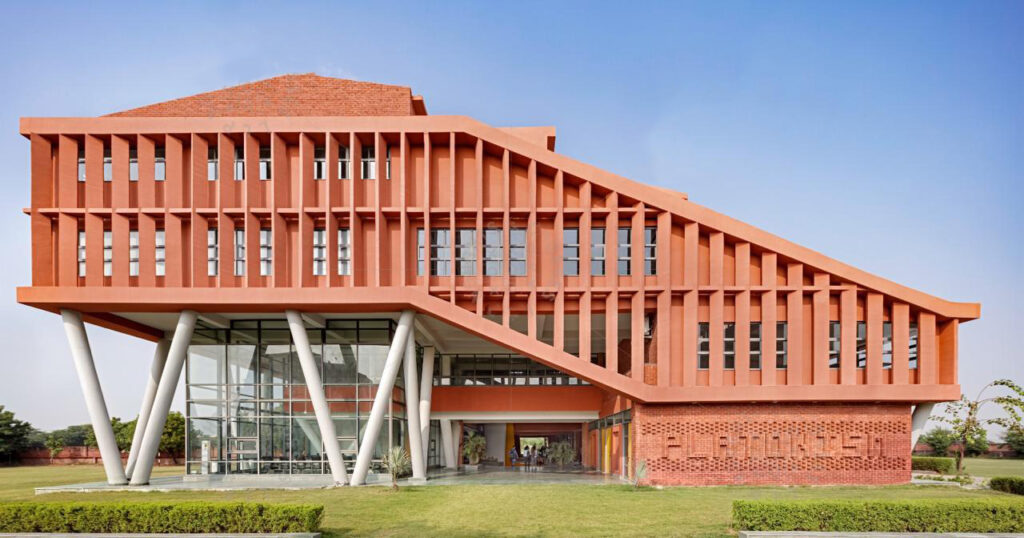
The future of Computer Science Engineering (CSE) is poised to be transformative, driven by rapid technological advancements and evolving societal needs. Here are some key trends and potential directions for the field:
Artificial Intelligence and Machine Learning::
Advanced AI Systems: Development of more sophisticated AI systems capable of understanding and interacting with humans on deeper levels.
AI in Everyday Life: Integration of AI in various sectors like healthcare, finance, education, and transportation.
Ethical AI: Focus on creating ethical and unbiased AI systems.
Quantum Computing
Revolutionizing Computing Power: Quantum computers promise to solve complex problems much faster than classical computers.
New Algorithms: Development of quantum algorithms for cryptography, optimization, and simulation.
Cybersecurity:::
Enhanced Security Measures: Increasing importance of robust cybersecurity to protect against sophisticated cyber threats.
Blockchain Technology: Use of blockchain for secure and transparent transactions.
Internet of Things (IoT)::
Connected Devices: Growth in the number of interconnected devices in homes, industries, and cities.
Smart Infrastructure: Development of smart cities with integrated IoT systems for efficient management.
Big Data and Analytics
Data-Driven Decision Making: Utilization of big data analytics for informed decision-making in business, healthcare, and governance.
Real-Time Analytics: Emphasis on real-time data processing and analysis.
Edge and Cloud Computing
Decentralized Computing: Shift towards edge computing for faster data processing close to the source.
Scalable Solutions: Continued reliance on cloud computing for scalable and flexible IT solutions.
Human-Computer Interaction (HCI)
Immersive Technologies: Advances in virtual reality (VR), augmented reality (AR), and mixed reality (MR) for enhanced user experiences.
User-Centric Design: Focus on designing intuitive and accessible interfaces.
Software Engineering Practices
Agile and DevOps: Increasing adoption of agile methodologies and DevOps practices for efficient software development and deployment.
Automation and AI in Software Development: Use of AI for automating coding, testing, and deployment processes.
Sustainable Computing
Green IT: Emphasis on energy-efficient computing and sustainable IT practices.
Recycling and E-Waste Management: Improved methods for recycling electronic waste and reducing environmental impact.
Educational and Professional Evolution
Interdisciplinary Learning: Integration of computer science with other disciplines like biology, finance, and social sciences.
Lifelong Learning: Continuous learning and upskilling to keep pace with rapid technological changes.
Ethics and Regulation
Ethical Considerations: Growing focus on the ethical implications of technology, including data privacy, algorithmic bias, and AI ethics.
Regulatory Frameworks: Development of regulations to govern the use of emerging technologies.
Innovation and Entrepreneurship
Startup Ecosystem: Increased support for tech startups and innovation hubs.
Collaborative Innovation: Collaboration between academia, industry, and government to drive technological advancements.
FAQs
What is Computer Science Engineering?
Computer Science Engineering is a discipline that integrates computer science and engineering to develop and improve software and hardware systems.
What do Computer Science Engineering students learn?
Students learn programming, algorithms, data structures, databases, computer networks, operating systems, artificial intelligence, and more.
What are some career opportunities in Computer Science Engineering?
Careers include software developer, systems analyst, data scientist having good data science knowledge, network engineer, cybersecurity expert, and AI specialist.
Is Computer Science Engineering the same as software engineering?
While they overlap, Computer Science Engineering has a broader scope, covering both software and hardware, whereas software engineering focuses specifically on software development processes.
What skills are important for Computer Science Engineering?
Critical skills include problem-solving, programming, analytical thinking, and a solid understanding of mathematics.
What programming languages are commonly used in Computer Science Engineering?
Common languages include Python, Java, C++, JavaScript, and SQL.
How does Computer Science Engineering contribute to technology?
Computer Science Engineering professionals design and optimize systems that drive technological innovations in various fields like healthcare, finance, and entertainment.
What is the future of Computer Science Engineering?
The future is promising, with growing demand for Computer Science Engineering professionals in emerging areas like artificial intelligence, machine learning, and data science.
Can I specialize in a specific area within CSE?
Yes, specializations include cybersecurity, machine learning, data science, and more.
What educational qualifications are needed for Computer science department?
Typically, a bachelor’s degree in computer science engineering or a related field is required, with further opportunities for advanced degrees and certifications.





